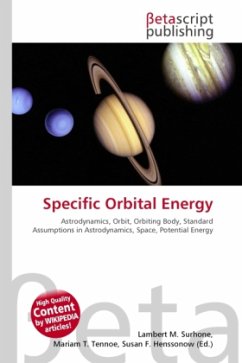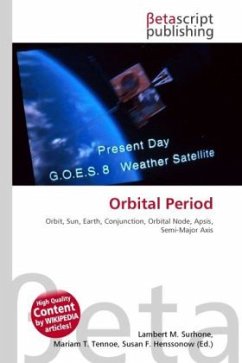High Quality Content by WIKIPEDIA articles! In astrodynamics the specific orbital energy epsilon,! (or vis-viva energy) of an orbiting body traveling through space under standard assumptions is the sum of its potential energy (epsilon_p,!) and kinetic energy (epsilon_k,!) per unit mass. According to the orbital energy conservation equation (also referred to as vis-viva equation) it is the same at all points of the trajectory: epsilon=epsilon_k+epsilon_p={v^2over{2}}-{muover{r}} =-{1over{2}}{mu^2over{h^2}}left(1-e^2right) where: v,! is the orbital speed of the orbiting body; r,! is the orbital distance of the orbiting body; mu = GM,! is the standard gravitational parameter of the primary body; h,! is the specific relative angular momentum of the orbiting body; e,! is the orbit eccentricity. It is expressed in J/kg = m²s-2 or MJ/kg = km²s-2.
Bitte wählen Sie Ihr Anliegen aus.
Rechnungen
Retourenschein anfordern
Bestellstatus
Storno








